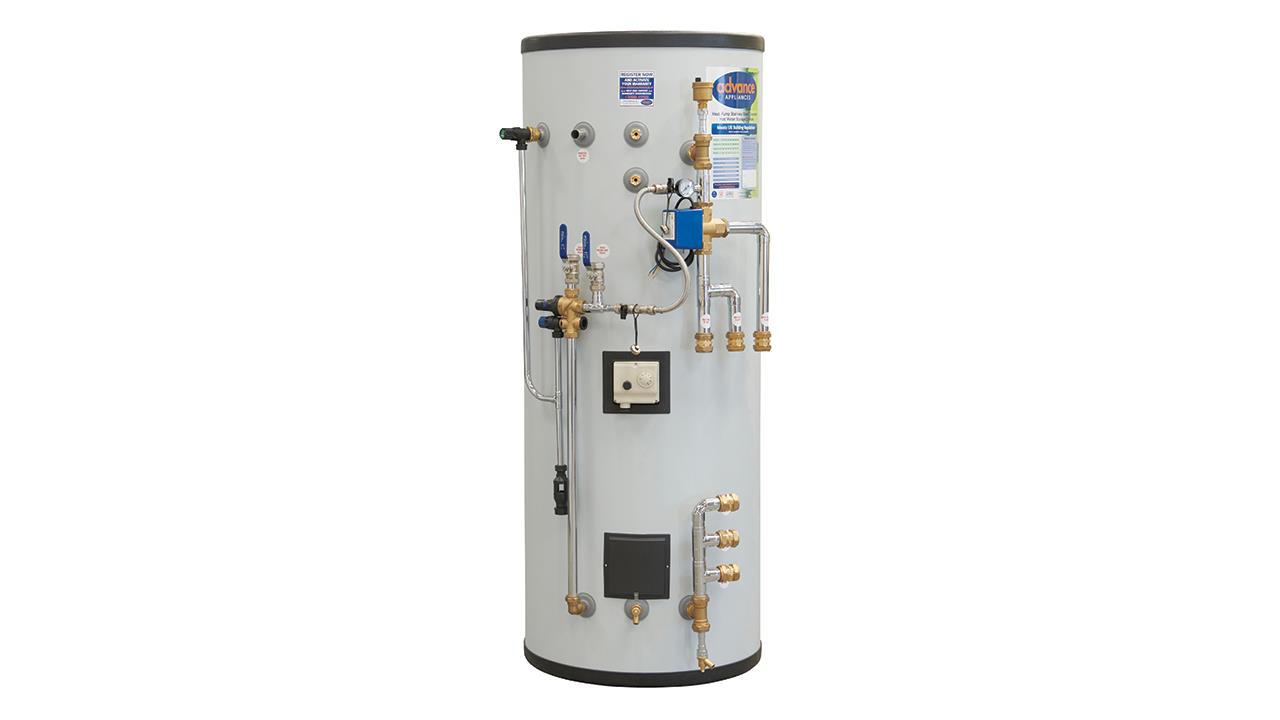

In 2019, the UK committed to reaching net-zero greenhouse gas emissions by 2050. To help with this goal, an additional pledge has been made to install 600,000 heat pumps per year by 2028.
In order to meet these targets, the industry must look at efficiency in the ways it installs heating and hot water systems, starting at the plumbing stage.
The past
The pre-plumbing of heating systems was initiated by the introduction of the combi boiler in the 1970s.
This notion was mirrored in the advent of system boilers, whereby the pump, expansion vessel, and PRV were all prefabricated and ready to connect to the hot water cylinder and heating system.
This concept was then extended to commercial heating systems, with the introduction of transportable boiler houses later in the 20th century.
The present
In more recent times, pre-plumbed and pre-wired hot water cylinders have enjoyed a growing success, thanks to the way the conditions in which the products are made could be controlled; therefore eliminating the potential for errors that could occur on-site. Not to mention doing away with the challenging task of fabricating a cylinder in a small cupboard, which resulted in increased installation time, and reduced reliability of the installation as a whole.
The future
Looking to the future, heat pumps have made the argument for prefabrication of heating systems even more relevant.
With the intricacies of these systems increasing, an installer might need to separately plumb the heat pump, cylinder, and a buffer tank individually on-site. With this extensive network of pipework within a potentially small cupboard space, installation can be an increasingly lengthy process and holds more potential for human error.
Prefabrication of heat pump cylinders
A simple way around this issue is the dispatch of cylinders with the pipework and valves all attached, or the pipework and valves all pre-plumbed, leaving just the simple task of lifting the unit into place.
From a wider angle, it seems inevitable that we will see pre-plumbed heat pump cylinders continue to enter the market, notably with the inclusion of the pre-plumbed buffer tank. This could go some way to solving some wider legislative concerns.
Meeting legislation
The then Department for Business, Energy & Industrial Strategy set an ambition to reduce the price of heat pump installations by 50%. Innovations like the prefabrication of heat pump cylinders will likely prove a great help in achieving this goal. Assuming prefabrication would reduce each installer’s time on-site by a day or two, the overall time, and financial cost of each project would be significantly reduced.
The same logic applies with regards to the government’s target of 600,000 heat pumps installed per year by 2028. While many may see this as an ambitious target, particularly in relation with concerns about staff shortages in the installer workforce, the concept of prefabricated heat pump cylinders is somewhat of a timely solution.
To align with net-zero by 2050, there is an urgent requirement to decarbonise UK heating systems, with most leaning on the promise of increasing heat pump installations. Through prefabrication, and other initiatives, we can collectively make small steps towards the ultimate goal of net-zero.
What now?
Overall, with the extensive variety in the makeup, and setup of UK houses, it is critical that installers’ processes are made easier when fitting hot water cylinders, and heat pump cylinders.
Not only does this benefit the homeowner, but likely will go some way to getting the country further along the line towards decarbonisation; a target in everyone’s best interests.
If you'd like to keep up-to-date with the latest developments in the heating and plumbing industry, why not subscribe to our weekly newsletters? Just click the button below and you can ensure all the latest industry news and new product information lands in your inbox every week.